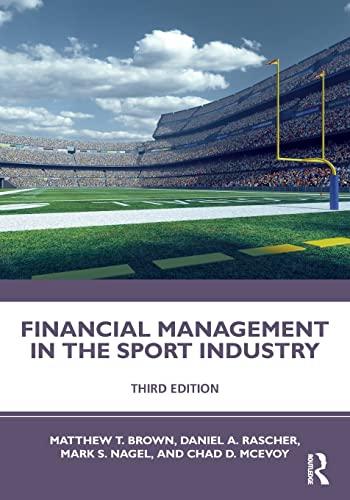Question
An investor is considering the purchase of Tata International Equity Fund (TIEF) for his portfolio. Like many U.S.-based mutual funds today, TIEF has more than
An investor is considering the purchase of Tata International Equity Fund (TIEF) for his portfolio. Like many U.S.-based mutual funds today, TIEF has more than one class of shares. Although all classes hold the same portfolio of securities, each class has a different expense structure. This particular mutual fund has three classes of shares: A, B, and C. The expenses of these classes are summarized in the following table:
Expense Comparison for Three Classes of TIEF
Sales Charge (load) on Purchases
Deferred Sales Charge (load) on Redemptions
Annual Expenses: Distribution Fee Management Fee Other Expenses
Class A
4% None
0.10% 0.75% 0.50% 1.35%
Class B
None
5% in the first year, declining by 1 percentage point each year thereafter
0.50% 0.75% 0.50% 1.75%
Class C
None
1% for the initial two years
0.75% 0.75% 0.50% 2.00%
The time horizon associated with the investors objective in purchasing TIEF is three years; he decidesto specify it as just over three years. He expects equity investments with risk characteristics similar to TIEF to earn 10% per year, and he decides to make his selection of fund share class based on an assumed 10% return each year, gross of any of the expenses given in the table above.
Based on only the above information, determine the class of shares that is most appropriate for this investor. Assume that expense percentages given will be constant at the given values. Assume that the deferred sales charges are computed on the basis of net asset value (NAV).
Step by Step Solution
There are 3 Steps involved in it
Step: 1

Get Instant Access to Expert-Tailored Solutions
See step-by-step solutions with expert insights and AI powered tools for academic success
Step: 2

Step: 3

Ace Your Homework with AI
Get the answers you need in no time with our AI-driven, step-by-step assistance
Get Started


